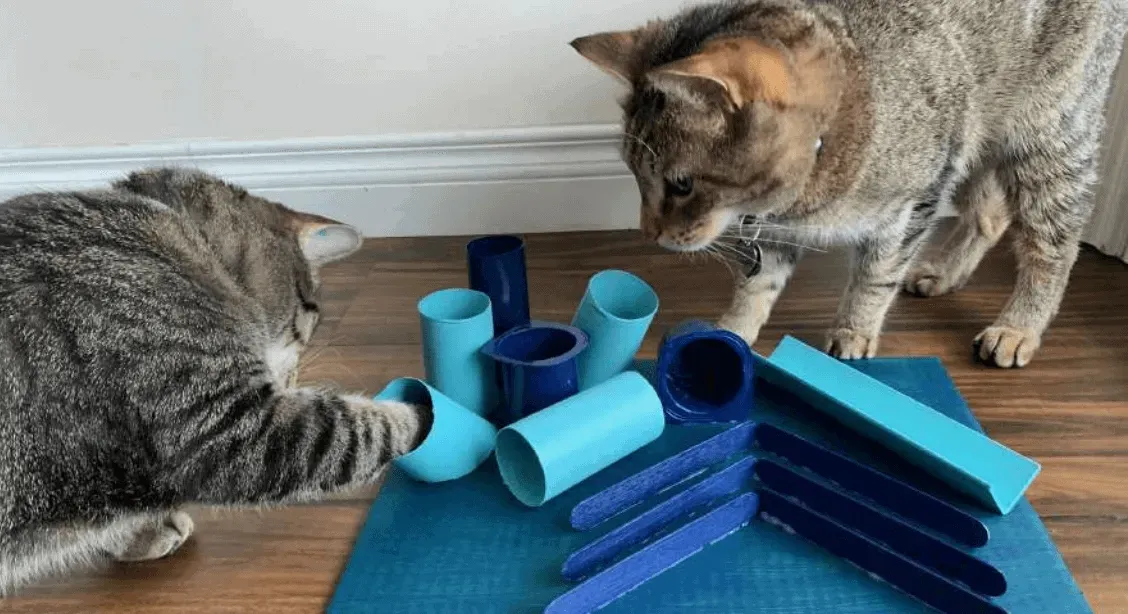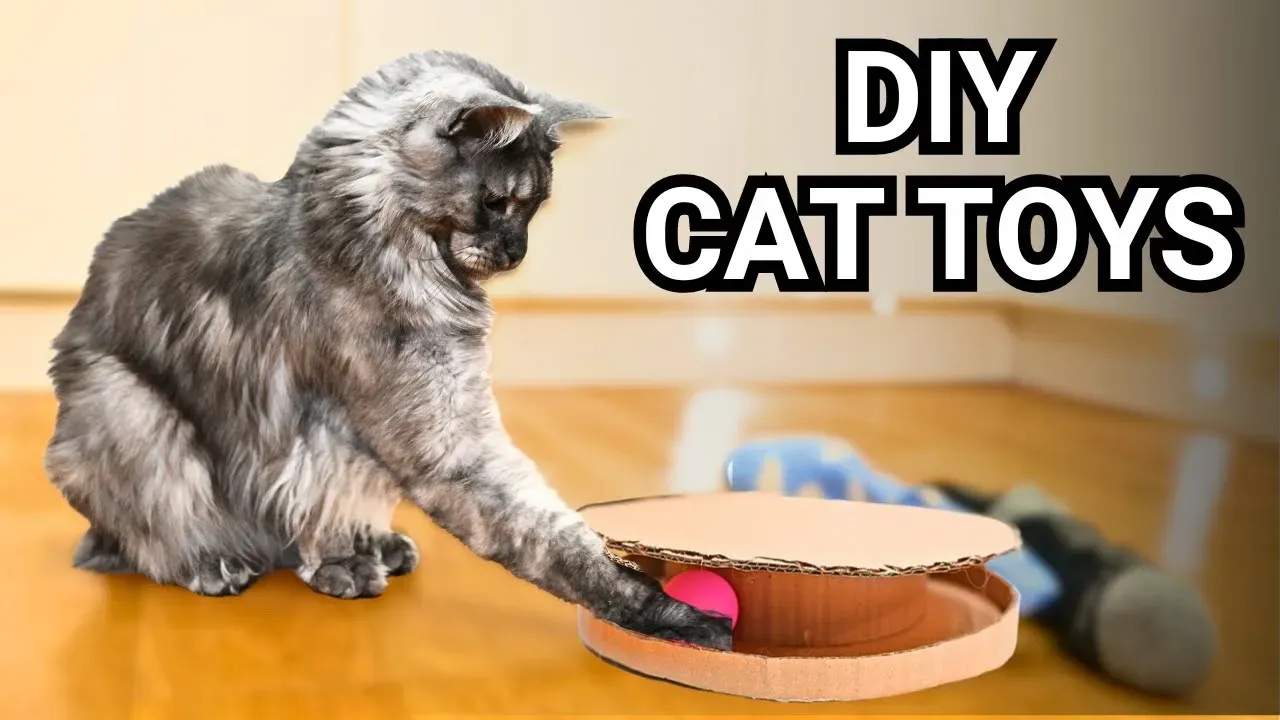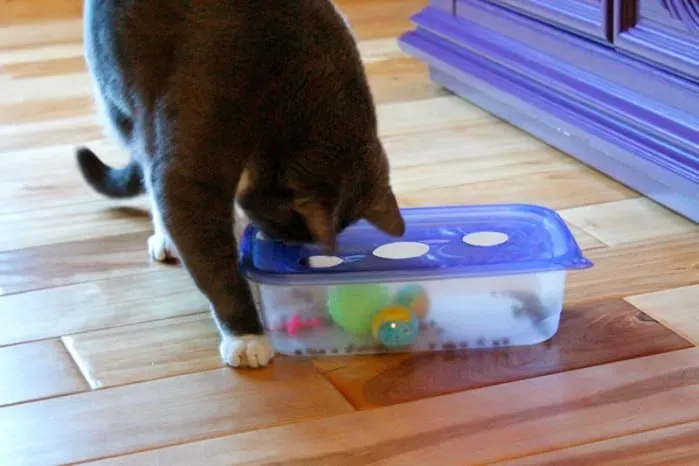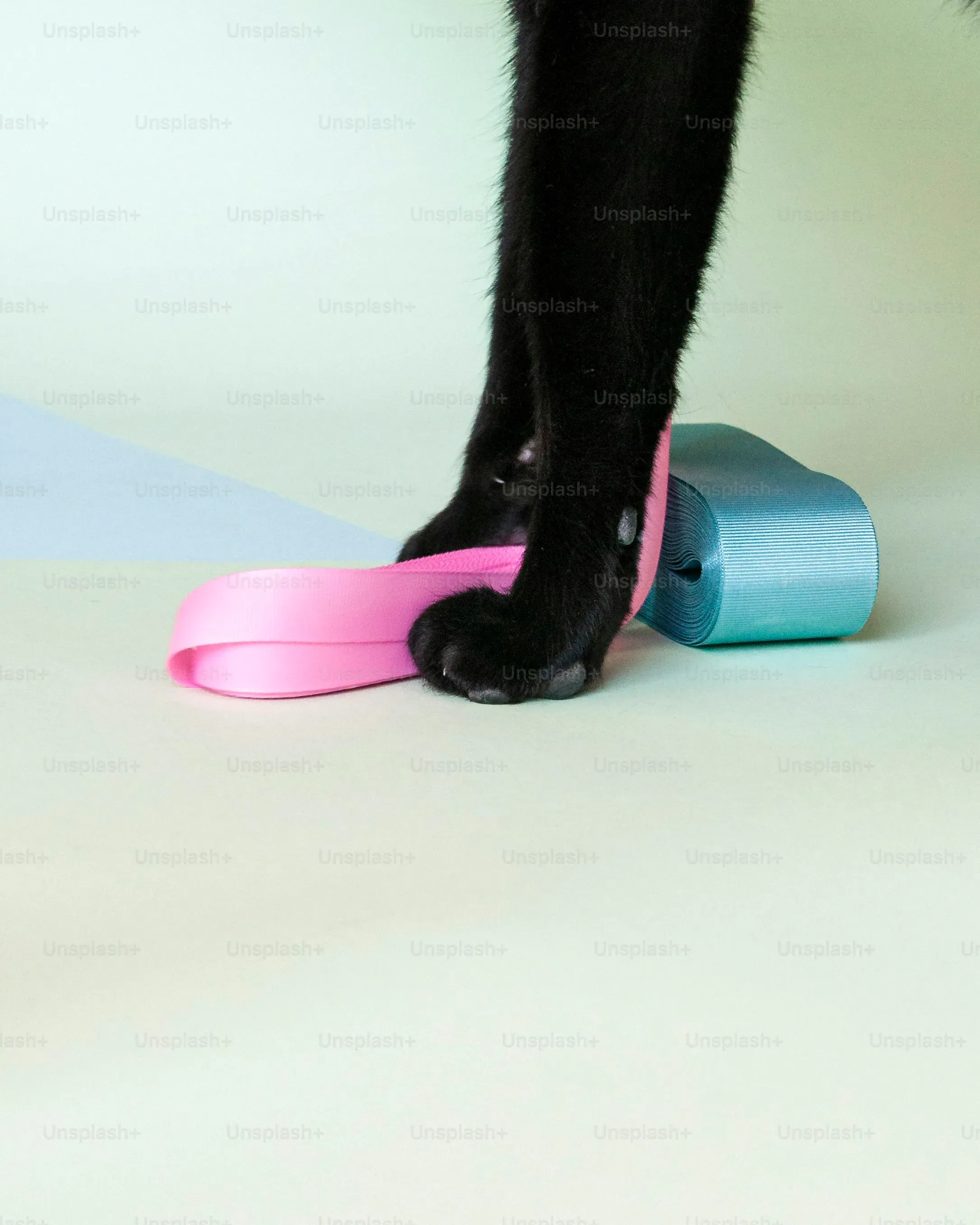Table of Contents
Ever feel like your cat's main hobbies are plotting world domination and systematically dismantling your furniture? A bored cat is often a destructive cat, and keeping them entertained doesn't have to involve shelling out cash for the latest squeaky thing they'll ignore after five minutes. If you're tired of the retail cycle of cat toy disappointment and shredded cardboard boxes are becoming a permanent fixture in your living room, maybe it's time to go rogue.
Why Make DIY Cat Toys? Keeping Them Busy on a Budget

Why Make DIY Cat Toys? Keeping Them Busy on a Budget
Stop Bleeding Cash on Fleeting Feline Fascination
Let's be real. You walk into a pet store, grab a cute little plush mouse or a jingly ball, and think, "This is it! Hours of entertainment!" Then you get home, the cat sniffs it, maybe bats it under the sofa, and goes back to staring at a dust bunny. Meanwhile, your wallet feels considerably lighter. Store-bought cat toys have a notoriously short lifespan, either from your cat's sheer destructive power or their baffling disinterest after the initial novelty wears off. Focusing onWhy Make DIY Cat Toys? Keeping Them Busy on a Budgetisn't just about being thrifty; it's about sanity. You can whip up something from materials you already own, and if they ignore or destroy it? No big loss.
Tailor-Made Entertainment for Your Particular Predator
Your cat isn't just *a* cat; they're *your* cat. They have quirks, preferences, and perhaps an irrational fear of crinkly sounds or an obsession with things that smell vaguely of tuna. Mass-produced toys are designed for the mythical "average" cat, which, let's face it, doesn't exist. When you make toys yourself, you can cater directly to your cat's specific hunting style or preferred textures. Does Mitten only care about things that dangle? Make a wand toy. Is Buster obsessed with batting things that roll? A simple cardboard tube might be his jam. This personalized approach means a higher chance of engagement than just tossing another generic fuzzy thing their way.
What's currently your cat's most ignored store-bought toy?
- The expensive laser pointer you bought?
- That fancy plush toy filled with premium catnip?
- Any toy you specifically bought for them, as opposed to the box it came in?
The Simple Satisfaction of Creation (and Less Landfill)
There's a quiet satisfaction in taking something destined for the recycling bin – a toilet paper roll, an old sock, a scrap of fabric – and turning it into something that brings your pet joy, even if that joy is expressed through attempted murder of the new creation. It feels less wasteful than constantly buying plastic fantastic toys that end up in pieces anyway. Plus, it’s a small, low-stakes creative outlet for you. No pressure, just a quick project using materials at hand, resulting in a potentially beloved toy and one less thing headed straight for the trash heap. It's a win-win, especially when you consider the goal is trulyWhy Make DIY Cat Toys? Keeping Them Busy on a Budgetwhile reducing your environmental pawprint.
Super Simple DIY Cat Toys You Can Make Today

Super Simple DIY Cat Toys You Can Make Today
The Mighty Power of Cardboard and Crumpled Paper
Forget fancy electronics or catnip-stuffed squirrels. Sometimes, the simplest things are the biggest hits. We're talking about materials you probably tossed in the recycling bin this morning. A plain cardboard box? Instant fort or ambush spot. A crumpled piece of paper? The classic "crinkle ball" – cheap, lightweight, and irresistible to many cats' predatory instincts. You can even take a toilet paper or paper towel roll, cut some slits in the ends, fold them in, and you've got a simple cylinder they can chase or bat around. It costs literally nothing and provides surprising entertainment. The goal here is minimal effort, maximum feline engagement.
Socks, Fabric Scraps, and Other Soft Targets
Dig through that pile of single socks that magically appear in every laundry cycle. They make fantastic basic toys. Tie a knot in one, maybe stuff a tiny bit of catnip inside (optional, some cats don't care), and you've got a soft, chewy, throwable toy. Old t-shirts or fabric scraps can be cut into strips and braided or knotted together to create tug toys or things they can bunny-kick. The key is using materials that are safe – no small buttons or embellishments that can be chewed off and swallowed. These soft targets are perfect for cats who prefer carrying their "prey" or engaging in mock wrestling matches.
Seriously Simple DIY Toy Ideas:
- Crumpled paper ball
- Empty cardboard box
- Toilet paper roll (plain or with folded ends)
- Single sock tied in a knot
- Strips of old t-shirt knotted together
Creative DIY Cat Toys to Keep Them Busy Longer

Creative DIY Cat Toys to Keep Them Busy Longer
Puzzle Feeders: Making Them Work for Their Kibble
so we've covered the quick wins. Now let's step it up a notch for those feline Einsteins who get bored easily. Puzzle feeders are fantasticCreative DIY Cat Toys to Keep Them Busy Longerbecause they tap into a cat's natural hunting drive, making them "work" for their food or treats. A simple version involves taking a cardboard box, cutting various sized holes in the sides (make sure they're big enough for kibble or a treat to fall out, but small enough the cat can't just dump it), and tossing some dry food inside. They have to bat and nudge the box to get the goodies out. You can make it more complex by using multiple layers of cardboard or different shaped containers. This isn't just a toy; it's mental stimulation, and frankly, watching them figure it out provides a certain level of schadenfreude.
Wand Toys and Feathered Friends (DIY Style)
Wand toys are perennial favorites, simulating the movement of birds or insects. Store-bought ones can be flimsy or have questionable attachments. Making your own lets you control the materials and durability. Take a sturdy stick or dowel rod (around 2-3 feet is good) and attach various things to the end with strong cord or twine. Feathers (ensure they are securely attached and large enough not to be swallowed), strips of fabric, or even crinkled cellophane can work wonders. The key is the unpredictable movement you provide by flicking the wand around. This engages their chase instinct and provides excellent exercise. Just remember to put wand toys away when you're not supervising playtime; loose strings can be hazardous.
DIY Puzzle Feeder Ideas:
- Cardboard box with holes
- Plastic bottles with small holes drilled in the side
- Muffin tin with crumpled paper or small balls covering some cups holding treats
Safety First: What to Watch Out For with DIY Cat Toys

Safety First: What to Watch Out For with DIY Cat Toys
Small Parts Are Big Problems
Craftingdiy cat toys to keep them busyis rewarding, but a critical step often overlooked is ensuring the toy won't turn into an emergency vet visit. The biggest culprit? Small pieces that can detach. Think buttons, beads, googly eyes, bells, or even tiny knots in string. Cats, being the efficient predators they are, often "kill" their toys by biting and tearing. If a small part comes off, it can easily be swallowed. This poses a choking hazard or, worse, can cause blockages in their digestive tract, which is a serious and potentially life-threatening issue. Always secure any additions firmly and choose materials that won't splinter or break into swallowable bits.
Strings and Linear Objects: A Hidden Danger
Wand toys are fantastic for exercise and simulating prey, but the string itself is a major risk. Cats' tongues have backward-facing barbs, making it difficult for them to spit out anything they start swallowing, especially linear objects like string, yarn, ribbon, or thread. If they ingest a long piece, it can cause the intestine to bunch up like an accordion as the body tries to move it through, leading to severe damage or perforation. Never leave string toys unattended. If you use string or yarn in a DIY project, ensure it's either very short and securely tied, or part of a toy that is only used during supervised play and put away immediately afterward. This vigilance is paramount when making safe and effectivediy cat toys to keep them busywithout creating new risks.
- Always supervise play with string or linear toys.
- Check DIY toys regularly for wear and tear.
- Remove and discard toys with small, loose parts.
- Avoid using elastic bands or rubber bands.
- Ensure any fabric used doesn't fray into long threads easily.
Material Matters: Avoiding Toxins and Sharp Edges
Not all household items are safe for feline interaction. Be mindful of the materials you select when creatingdiy cat toys to keep them busy. Avoid anything treated with chemicals, paints, or finishes that could be toxic if licked or chewed. Old fabrics might have been washed with harsh detergents; new fabrics could contain dyes. Stick to natural materials like untreated wood, plain cardboard, cotton fabric, and natural feathers where possible. Also, check for sharp edges or points on finished toys, especially if using cardboard or plastic. Sand down rough spots on wood and ensure cardboard edges aren't jagged. A safe toy is an effective toy.
Beyond the Toy: Other Ways to Keep Your Cat Busy

Beyond the Toy: Other Ways to Keep Your Cat Busy
Environmental Enrichment: More Than Just a Flat Surface
you've made a few brilliantdiy cat toys to keep them busy, and maybe they're even playing with them. But toys alone aren't a complete solution for a bored or stressed cat. Think about it from their perspective. They're natural climbers, observers, and hunters, often stuck in a two-dimensional world. Providing vertical space is huge. Cat trees, shelves they can jump onto, or even just clearing space on top of a bookcase gives them a vantage point, which reduces anxiety and provides a sense of security. Hiding spots – cardboard boxes, tunnels, or even just leaving a closet door ajar – satisfy their instinct to retreat and observe unseen. A well-appointed environment is just as important as a stash of enticing toys.
Interactive Play: You're Part of the Fun (Whether You Like It Or Not)
That fancy feather wand or crinkle ball you made? It's only truly effective if you're wielding it. Passive toys have their place, but nothing beats dedicated, interactive playtime for burning energy and satisfying predatory urges. This isn't just about dangling something; it's about mimicking prey behavior – sudden movements, hiding, pouncing. Short, frequent play sessions (5-15 minutes, a couple of times a day) are more effective than one long, drawn-out one. Pay attention to how your cat "hunts" and tailor your movements. End the session by letting them "catch" the toy, which provides a crucial sense of completion to their hunting sequence. Ignoring this step is like making them chase a mouse and then having it disappear into a wall every time.
Interactive Play Do's | Interactive Play Don'ts |
|---|---|
Mimic prey movements (stop, start, hide) | Use hands or feet as toys |
End with a "catch" | Shine lasers directly in their eyes |
Use wand toys, chase toys | Force interaction when they aren't interested |
Mental Stimulation: Engaging Their Tiny, Calculating Minds
It's not just about physical exertion; cats need mental challenges too. Puzzle feeders, as mentioned before, are great for this. But you can also try teaching them simple tricks. Yes, cats can be trained! Clicker training can be used to teach them to sit, high-five, or even come when called. It's a fantastic way to bond and provides significant mental stimulation. Providing safe access to watch the outside world – a comfy perch by a window – is also surprisingly engaging; it's like their personal, never-ending nature documentary. Rotate their toys and environmental elements occasionally to keep things fresh. Predictability breeds boredom, and a bored cat is probably eyeing your favorite curtains right now.
Keeping Them Busy Without Breaking the Bank
So there you have it. Before you click 'add to cart' on another expensive cat toy, take a look around your house. Odds are, you've got everything you need to whip up something that will capture your cat's attention, at least for a while. Makingdiy cat toys to keep them busyisn't just about saving money; it's about providing unique, stimulating objects that store-bought options often miss. It might not solve *all* your cat's behavioral quirks, but a few well-placed homemade distractions can certainly help redirect that energy away from your favorite sofa cushion. Give it a shot; your cat might surprise you.